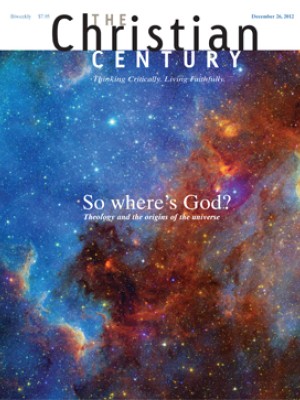Sunday, January 6, 2013: Matthew 2:1-12; Isaiah 60:1-6
When I was growing up in a Lutheran parsonage on the prairies of North Dakota, our congregation hosted mission festivals during Epiphany. One week our family entertained two missionaries: a missionary to Japan who’d been born in China to Lutheran missionaries but then forced out by the communists, and a missionary who’d worked in Taiwan after the closing of the bamboo curtain. They filled my imagination with romantic dreams of a world far away.
That year, probably 1953, the weather was colder than it had been in years, and we gathered in church with the coal furnace in the basement feebly sending its dry and pungent air into the meeting. People came through the dangerous cold—it was 45 degrees below zero for at least a week—to hear these people from far and exotic countries. (In 1953 we had no television, only radio, newspapers and books.) We had sent these people out to places we seldom heard from, and they were coming back with thrilling and amazing stories about people to whom they had taken the good news of Jesus Christ. I was enthralled and wanted to return to the East with them.
Read our latest issue or browse back issues.
Epiphany meant mission. That made sense to me because of the imagery of light. Jesus was the light of the world, and he had come into the world to bring the light to everyone. And it was our job to make sure everyone heard about Jesus. About that there was no doubt, even in this place so far away from anywhere of importance.
Lately I’ve been teaching the biblical texts in which Mary, the mother of Jesus, appears. I use the paintings by the great artists of the Christian church over the past two millennia, paintings that enlarge my understanding of Epiphany. They show the entire world coming to worship and bow down to the baby Jesus, from the greatest kings to the simplest peons in their retinues.
Some of these paintings show more than the three kings who came out of the East. The artists understood that the wise men brought others with them, or, as Isaiah 60:6 says, “All those from Sheba shall come. They shall bring gold and frankincense, and shall proclaim the praise of the Lord.” Some painters filled the scenes with royal personages coming from all around the known world. These painters knew what royal progressions looked like: they knew that the retinues of the king or queen were sometimes so large that they bankrupted the noblemen they visited. In other paintings, one sees lines of pilgrims on roads stretching far into the distance. Those who’ve come near to the child are kneeling down. Sometimes the baby is looking down at old resplendent men worshiping him.
Some years ago I visited the Market Place Lutheran Church in Halle, Germany, and looked up at the altar painting of the wise men. I saw something different from the bathrobed kings that I remembered from Christmas pageants. The painting highlights the ethnicities of the wise men—Balthazar from Arabia, Melchior from Persia and Caspar from India. While there is nothing in scripture citing these names or insisting that the men came from different regions or different continents, the diversity makes sense.
Gold, frankincense and myrrh were not just three costly gifts. The medieval mind knew the meanings of these gifts, but Matthew understood long before they did; he too was reading Isaiah. Gold, of course, is a gift worthy of a king; frankincense is for the worship of a god; and myrrh is an embalming oil. Here was a king, a god and a human being who was to die. In those three images of wise men and their gifts, we see that he would die for not one tribe or nation but for all people. Jesus said he would draw all people unto himself, and this is one of the first scenes in which we see that happening.
Did we North Dakotans out on the frozen tundra know that we were honoring a god who had promised to draw all people to him, people like the wise men making their difficult way to Bethlehem to worship our Savior? While I am not sure such thoughts occurred to us at the time, the people from old-country stock knew they were doing something that they and those before them had always done at this time of the year.
Did they know that their gifts went to bring more people to kneel before this baby in Bethlehem? I am not sure they could have put it so clearly, but they knew they supported mission efforts because support had been given for generations. As they gathered in the cold basement of the church, listening to how Jesus had changed the lives of many far away, they sensed they were in the presence of a power that caused them to kneel in worship, the same power that had led those who arrived on camels to get down and kneel some 2,000 years earlier.






